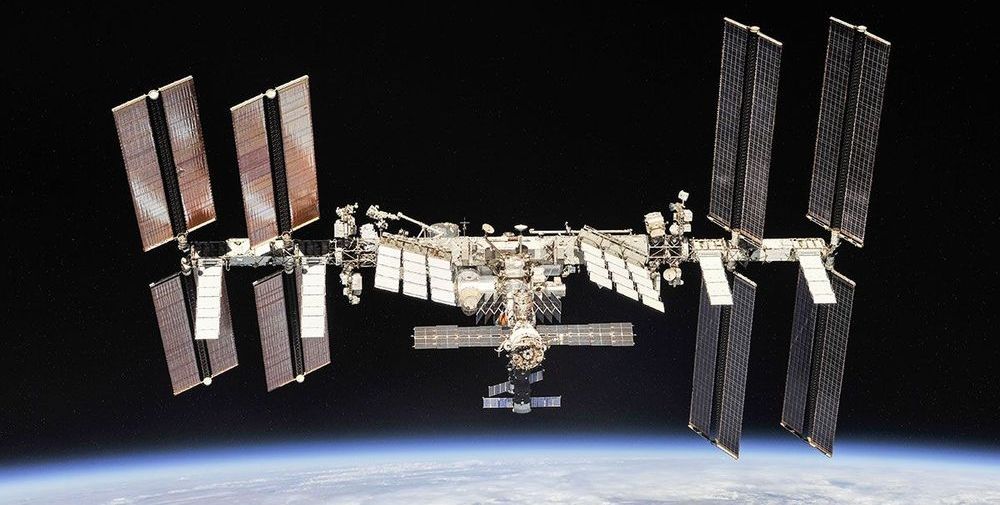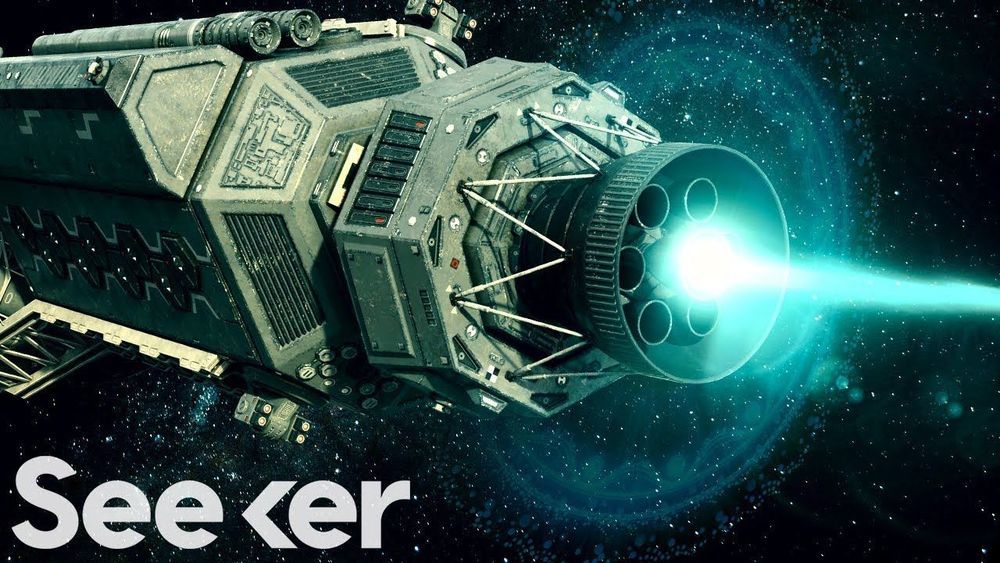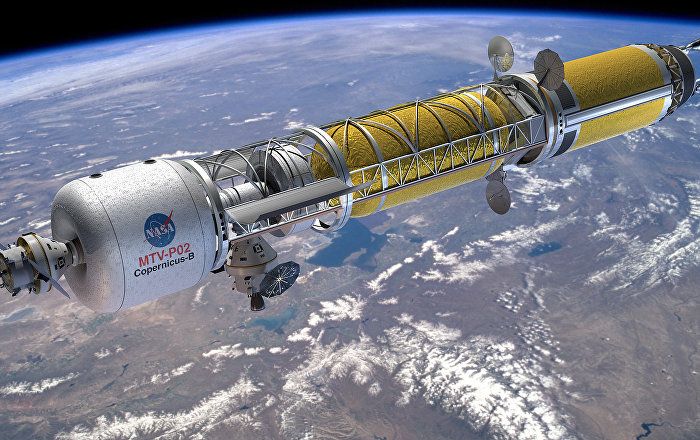The U.S. space program is developing gigabit-per-second deep-space comms. China is on the hunt too.
Outer space is a tough environment for living organisms: no atmosphere, no oxygen, no gravity, a ton of radiation, and extreme temperatures.
But the German Aerospace Center just made a bombshell discovery: as part of a project called the Biology and Mars Experiment, they found that samples of organisms including bacteria, algae, lichens and fungi survived on the exterior of the International Space Station for 533 days.
Time may be a human construct but that hasn’t stopped physicists from perfecting it.
JILA’s 3D Quantum Gas Atomic Clock Offers New Dimensions in Measurement
https://www.nist.gov/news-events/news/2017/10/jilas-3-D-quan…easurement
“JILA physicists have created an entirely new design for an atomic clock, in which strontium atoms are packed into a tiny three-dimensional (3D) cube at 1,000 times the density of previous one-dimensional (1-D) clocks. In doing so, they are the first to harness the ultra-controlled behavior of a so-called “quantum gas” to make a practical measurement device.”
Jun Ye: Let There Be Light (and Thus, Time)
Dr. Jun Ye, professor of physics at the University of Colorado at Boulder and a fellow of both the National Institute of Standards and Technology and JILA, explains how lasers are used to manipulate atoms inside and out for ultra-precise clocks.
Ultra-Accurate Clocks Lead Search for New Laws of Physics.
Atomic clocks are letting physicists tighten the lasso around elusive phenomena such as dark matter.
Sign Up For The Seeker Newsletter Here — http://bit.ly/1UO1PxI
____________________
About the Presenter:
After getting his Ph.D. in physics from UC San Diego, Garrett moved to Maui, seeking an optimum balance between surfing and his theoretical research. While pursuing an unanswered question at the heart of Quantum Field Theory, he began to develop what he called “An Exceptionally Simple Theory of Everything,” which proposed a unified field theory combining particle physics and Albert Einstein’s theory of gravitation. His story and work have been featured at TED, in Outside Magazine, The New Yorker, Surfer, and recently in Scientific American.
#FQXiVideoContest2014
About TEDx
In the spirit of ideas worth spreading, TEDx is a program of local, self-organized events that bring people together to share a TED-like experience. At a TEDx event, TEDTalks video and live speakers combine to spark deep discussion and connection in a small group. These local, self-organized events are branded TEDx, where x = independently organized TED event. The TED Conference provides general guidance for the TEDx program, but individual TEDx events are self-organized.* (*Subject to certain rules and regulations)
Berlin is Becoming a Sponge City
Posted in business
Berlin is becoming a “Sponge City” designed to tackle two issues — heat and flooding — by imitating nature.
Video by Gloria Kurnik
https://www.bloomberg.com/news/videos/2017-08-18/spo…oler-video
———
Like this video? Subscribe to Bloomberg on YouTube: https://www.youtube.com/Bloomberg?sub_confirmation=1
Bloomberg is the First Word in business news, delivering breaking news & analysis, up-to-the-minute market data, features, profiles and more: http://www.bloomberg.com
What exactly would it take to create our very own Swartzchild Kugelblitz?
Could a Dyson Sphere Harness the Full Power of the Sun? — https://youtu.be/jOHMQbffrt4
Kugelblitz! Powering a Starship With a Black Hole
https://www.space.com/24306-interstellar-flight-black-hole-power.html
“Interstellar flight certainly ranks among the most daunting challenges ever postulated by human civilization. The distances to even the closest stars are so stupendous that constructing even a scale model of interstellar distance is impractical. For instance, if on such a model the separation of the Earth and sun is 1 inch (2.5 centimeters), the nearest star to our solar system (Proxima Centauri) would be 4.3 miles (6.9 kilometers) away!”
Kugelblitz Black Holes: Lasers & Doom
https://futurism.com/kugelblitz-black-holes-lasers-doom
“A kugelblitz black hole could theoretically be created by aiming lasers vastly more powerful than anything we have today at a single point. Logically, one could assume that turning off the lasers would ‘turn off’ the black hole? Well, that’s not quite right”
What is a Dyson sphere?
“In recent years, astronomers explored that possibility with a bizarre star, known to astronomers as KIC 8462852 – more popularly called Tabby’s Star for its discoverer Tabetha Boyajian. This star’s strange light was originally thought to indicate a possible Dyson sphere. That idea has been discarded, but, in 2018, other possibilities emerged, such as that of using the Gaia mission to search for Dyson spheres.“
____________________
Elements is more than just a science show. It’s your science-loving best friend, tasked with keeping you updated and interested on all the compelling, innovative and groundbreaking science happening all around us. Join our passionate hosts as they help break down and present fascinating science, from quarks to quantum theory and beyond.
According to the report, the Defence Advanced Research Projects Agency (DARPA) has requested at least $10 million for its Reactor on a Rocket (ROAR) programme.
The Defence Advanced Research Projects Agency intends to assemble a nuclear thermal propulsion (NTP) system in orbit, Aviation Week reported, citing the Pentagon’s 2020 budget.
“The program will initially develop the use of additive manufacturing approaches to print NTP fuel elements… In addition, the program will investigate on-orbit assembly techniques (AM) to safely assemble the individual core element subassemblies into a full demonstration system configuration, and will perform a technology demonstration”, the budget document says.
Bio-PDO — Susterra propanediol produced by DuPont Tate & Lyle Bio Products — are among the many smart applications of corn, and constitute the building blocks of a number of environmentally friendly materials, increasingly used in the footwear manufacture.
We are all familiar with sweetcorn or corn on the cob and many of us enjoy eating it boiled and coated in butter. Americans in particular are especially fond of it although less than 1% of all the corn grown annually in the USA is for human consumption. The remaining 99% is industrial corn or maize which is used for animal feed and for processing into a variety of other products. Among these is Bio-PDO or, to give it its commercial name, Susterra propanediol produced by DuPont Tate & Lyle Bio Products, which is used as a basis for a number of environmentally friendly materials, increasingly used in footwear manufacture.
The variety of corn involved is known as yellow dent and has a high starch content. After harvesting and drying, it is transported to Tate & Lyle’s wet mill at Loudon, Tennessee. Using a wet milling process, the corn is separated into its four basic components: starch, germ, fibre and protein. The nutrient rich components are used for animal feed while glucose is derived from the remaining starch fraction and is the raw material used for making 1.3- propanediol. The process starts off with a culture of a special microorganism in a small flask with the glucose. As it grows, it is transferred to a seed fermenter, followed by a ten-story high production fermenter. Fermentation takes place under exact temperature conditions and involves a patented process where the microorganism functions as a biocatalyst, converting glucose into biobased 1.3-propaneidol.
Spiders, mushrooms and algae may help build the next Hilfiger, Levi and Chanel.
Organisms are the great designers of our planet, producing materials in distinct patterns to serve a specific function. Bees produce hexagonal honeycombs to store honey, spiders weave symmetrical webs to capture prey, and nautiluses form a logarithmic spiral shell to protect their insides. Synthetic biologists, ever inspired by nature, are leveraging these unique abilities, harnessing nature’s potential to revolutionize apparel by guiding structural assemblies at the molecular level.
Here are three examples of innovative companies — in Tokyo, New York, and Berkeley — that are letting nature show the way to better, more sustainable materials in a quest to alter the fashion and apparel industries forever.









